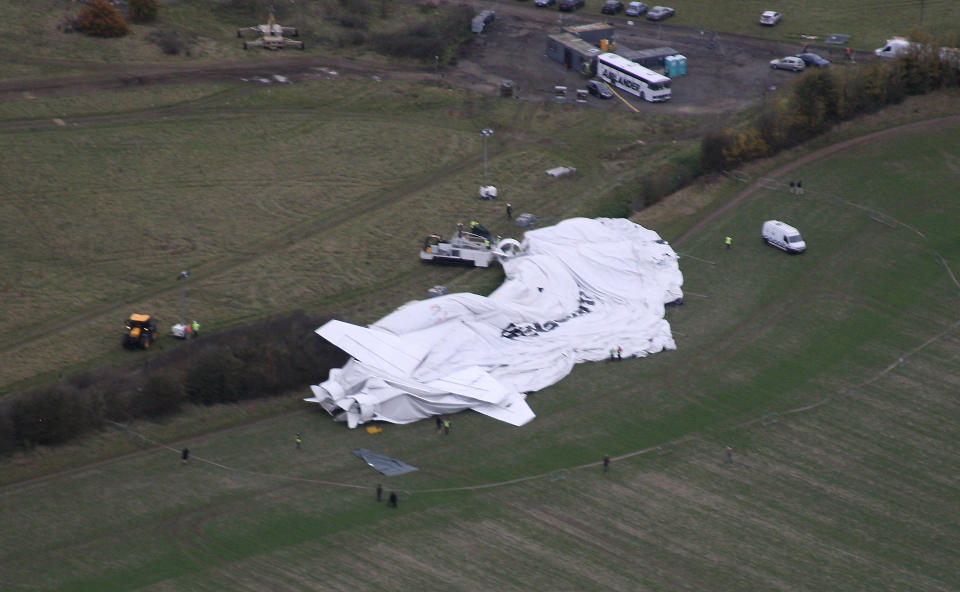World's longest aircraft the 'Flying Bum' seriously damaged after it crashes AGAIN

The world’s longest aircraft, nicknamed the ‘Flying Bum’, has been seriously damaged after it slipped its moorings and crashed into a field.
The Airlander 10 crash-landed after apparently breaking free from its mast, leaving its huge canopy completely deflated.
The 302ft prototype, made by Hybrid Air Vehicles is half airship, half aeroplane and is the largest aircraft in the world – bigger than an Airbus A380.

Capable of carrying 10 tonnes and up to 60 passengers, it is hoped that it will be used for commercial flights from 2019, taking tourists for air cruises – like a cruise liner of the sky.
But the huge aircraft has been left damaged after a collision which saw police called to a site close to its hangars in Cardington, Bedfordshire.
MORE: Tributes paid to helicopter pilot among four men killed in mid-air collision with plane
MORE: Time travel is possible, says astrophysicist (but there’s a catch)
Pub landlord and councillor Paul Smith said: “Sad news for Airship fans, The Airlander has broken free from its mast this morning and has deflated.
“It’s currently in a field next to the Cardington sheds, the wreckage looks quite bad at the moment but we await confirmation apparently trees ripped the skin open.”

Beds, Cambs & Herts Roads Policing Unit at 10.12am tweeted pictures of the crash, saying: “Officers attending collision involving the #Airlander.”
Officers attending collision involving the #Airlander pic.twitter.com/ldWNzxyXlz
— BCH Road Policing (@roadpoliceBCH) November 18, 2017
It is not the first crash the Airlander has experienced a collision – the airship cost £100m to get into the air before it crashed in only its second ever UK flight when its mooring lines got tangled with power lines in August 24 last year.
It is hoped the blimp, which can hover as well as land on almost any surface – including ice or water – and will be able to stay in the air for up to two weeks at a time, will act like a cruise liner in the sky, taking tourists to landscapes from the North Pole to the Bolivian Salt Pans and the Namib Desert.

 Yahoo News
Yahoo News 

